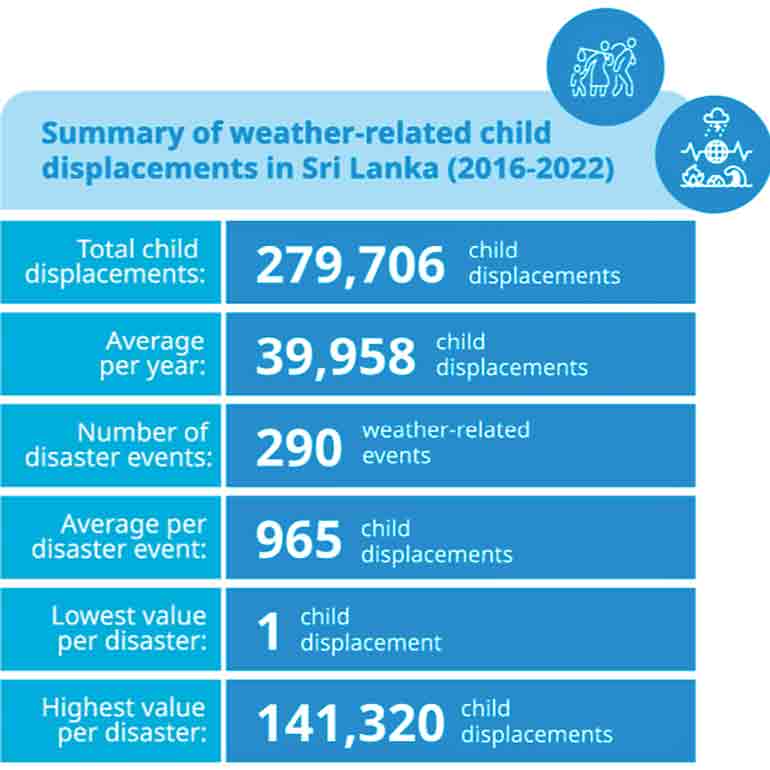Sunday Dec 14, 2025
Sunday Dec 14, 2025
Tuesday, 7 October 2025 02:53 - - {{hitsCtrl.values.hits}}
Sri Lanka has recorded the third highest number of child displacements from climate-related disasters in South Asia, following India and Bangladesh, according to a new report by the United Nations Children’s Fund (UNICEF) for South Asia.
“India, given its large population, experienced the highest absolute number of child displacements linked to weather-related disasters during this period, totalling 6.9 million across all hazards,” the report said.
“Bangladesh recorded the highest relative impacts, with child displacements representing an estimated 7.2% of its child population. Sri Lanka followed closely, with an estimated 4.6% of its under-18 population displaced over the past seven years.”
From 2016 to 2022, Sri Lanka recorded an average of 965 child displacements per disaster. Over that seven-year period, approximately 280,000 Sri Lankan children, or 4.6% of the country’s child population, were displaced. “Storms caused 54% of the displacement, while floods forced 44% to leave home,” the report noted.
Tropical Cyclone Roanu, which brought the heaviest rainfall to Sri Lanka in more than 25 years in 2016, displaced around 141,000 children. However, most of these displacements were “pre-emptive evacuations,” which UNICEF said helped prevent fatalities.

“When analysing the regional data, it is crucial to acknowledge that many displacement figures stem from pre-emptive evacuations, particularly in countries with established evacuation procedures and early-warning policies like Bangladesh, India, and Sri Lanka,” the report said.
“While these evacuations constitute a form of displacement and can create vulnerabilities for children, they have proven highly effective at protecting lives, with fatalities from natural hazards, especially cyclones, decreasing dramatically since implementing such preventive measures.”
The report noted that South Asia remains vulnerable to displacement caused by weather-related disasters and the worsening impacts of climate change, intensified by rising sea levels, extreme weather events, and other hazards.
“Amidst these crises, children face considerable risk, including disruptions to their education and healthcare and increased exposure to protection violations, including violence and exploitation,” UNICEF said.
The organisation urged Governments, donors, development partners, and the private sector to work together to improve protection, preparedness, and inclusion of children in climate-related policies and actions.